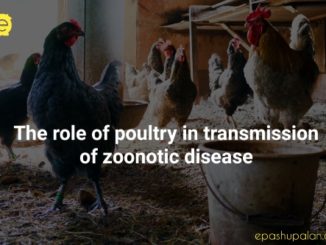Methods of Bacterial Identification
1. Microscopy
Microorganisms can be examined microscopically for:
- Bacterial motility: Hanging drop method- A drop of bacterial suspension is placed between a cover slip and glass slide.
- Morphology and staining reactions of bacteria:
- Simple stain: methylene blue stain
- Gram stain: differentiation between Gm+ve and Gm–ve bacteria .
Primary stain (Crystal violet).
Mordant (Grams Iodine mixture).
Decolorization (ethyl alcohol).
Secondary stain ( Saffranin). - Ziehl-Neelsen stain: staining acid fast bacilli . Apply strong carbol fuchsin with heat . Decolorization (H2SO4 20% and ethyl alcohol) . Counter stain (methylen blue).
- Fluorescence:
Direct fluorescence.
Immunofluorescences.
2. Culture Techniques
Culture media are used for:
- Isolation and identification of pathogenic organisms
- Antimicrobial sensitivity tests
Types of culture media:
a- Liquid media:
- Nutrient broth: meat extract and peptone
- Peptone water for preparation sugar media
- Growth of bacteria detected by turbidity
b- Solid media:
- Colonial Appearance
Effect on lactose of MacConkey’s agar:
- Lactose fermenters: • Appear as rose pink colonies. Example: E. coli & klebsiella.
- Non Lactose fermenters: Appear as pale colonies.Example: salmonella & shigella.
- Hemolytic Activity
- Complete (beta) hemolysis: Staphylococcus aureus and Streptococcus pyogenes.
- Partial (alpha) hemolysis: Streptococcus viridans and pneumococci.
- No (gamma) hemolysis: Enterococci.
- Pigment Production
Endopigment (restricted to the colonies):
- Golden yellow with Staphylococcus aureus.
- White with Staph. epidermidis.
Exopigment (the color diffuses in the surrounding medium):
- Green exopigment with Pseudomonas aeruginosa.
3. Biochemical Reaction
Use of substrates and sugars to identify pathogens:
a. Sugar fermentation
Organisms ferment sugar with production of acid only.
Organisms ferment sugar with production of acid and gas.
Organisms do not ferment sugar.
b. Production of indole
Depends on production of indole from amino acid tryptophan.
Indole is detected by addition of Kovac’s reagent.
Appearance of red ring on the surface.
c. H2S production
Depends on production H2S from protein or polypeptides.
Detection by using a strip of filter paper containing lead acetate.
d. Methyl red reaction (MR)
Fermentation of glucose with production of huge amount of acid
Lowering pH is detected by methyl red indicator
e. Voges proskaur’s reaction (VP)
Production of acetyl methyl carbinol from glucose fermentation
Acetyl methyl carbinol is detected by addition KOH
Color of medium turns pink (positive)
f. Action on milk
Fermentation of lactose with acid production
Red color if litmus indicator is added
g. Oxidase test
Some bacteria produce Oxidase enzyme
Detection by adding few drops of colorless oxidase reagent
Colonies turn deep purple in color (positive)
h. Catalase test
Some bacteria produce catalase enzyme
Addition of H2O2 lead to production of gas bubbles (O2 production)
i. Coagulase test
Some bacteria produce coagulase enzyme
Coagulase enzyme converts fibrinogen to fibrin (plasma clot)
Detected by slide or test tube method
j. Urease test
Some bacteria produce urease enzyme
Urease enzyme hydrolyze urea with production of NH3
Alklinity of media and change color of indicator from yellow to pink
4. Serological identification
A- Direct serological tests
Identification of unknown organism
Detection of microbial antigens by using specific known antibodies
Serogrouping and serotyping of isolated organism
B- Indirect serological tests
Detection of specific and non specific antibodies (IgM & IgG) by using antigens or organisms.
5. Animal inoculation
The use of laboratory animals (mice, guinea pigs, rabbits) is now limited due to the advancement in microbiological techniques. Guinea pig, Mouse.
But they could be used
- For growing the organisms that do not grow on culture such as lepra bacilli.
- To determine the virulence factor of an organism. For example if injection of diphtheria in a guinea pig caused its death, this means that the organism is toxigenic.
6. Bacteriophage typing
- Bacteriophages are viruses which infect the bacterial cells and cause their lysis.
- Different types of a certain bacteria are lysed by different phage groups.
- If a phage is added to a plate inoculated with susceptible bacteria, a zone of lysis will appear around the phage drop.
7. Molecular Biology Techniques
A- Genetic probes (DNA or RNA probes)
Detection of a segment of DNA sequence (gene) in unknown organism using a labeled probe
Probe: consists of specific short sequence of labeled single- stranded DNA or RNA that form strong covalently bonded hybrid with specific complementary strand of nucleic acid of organism.
B- Polymerase chain reaction (PCR)
Amplification of a short sequence of target DNA or RNA Then It is detected by a labeled probe.
C- Plasmid profile analysis
Isolation of plasmids from bacteria and determination of their size and number compared with standard strains by agarose gel electrophoresis.






Be the first to comment